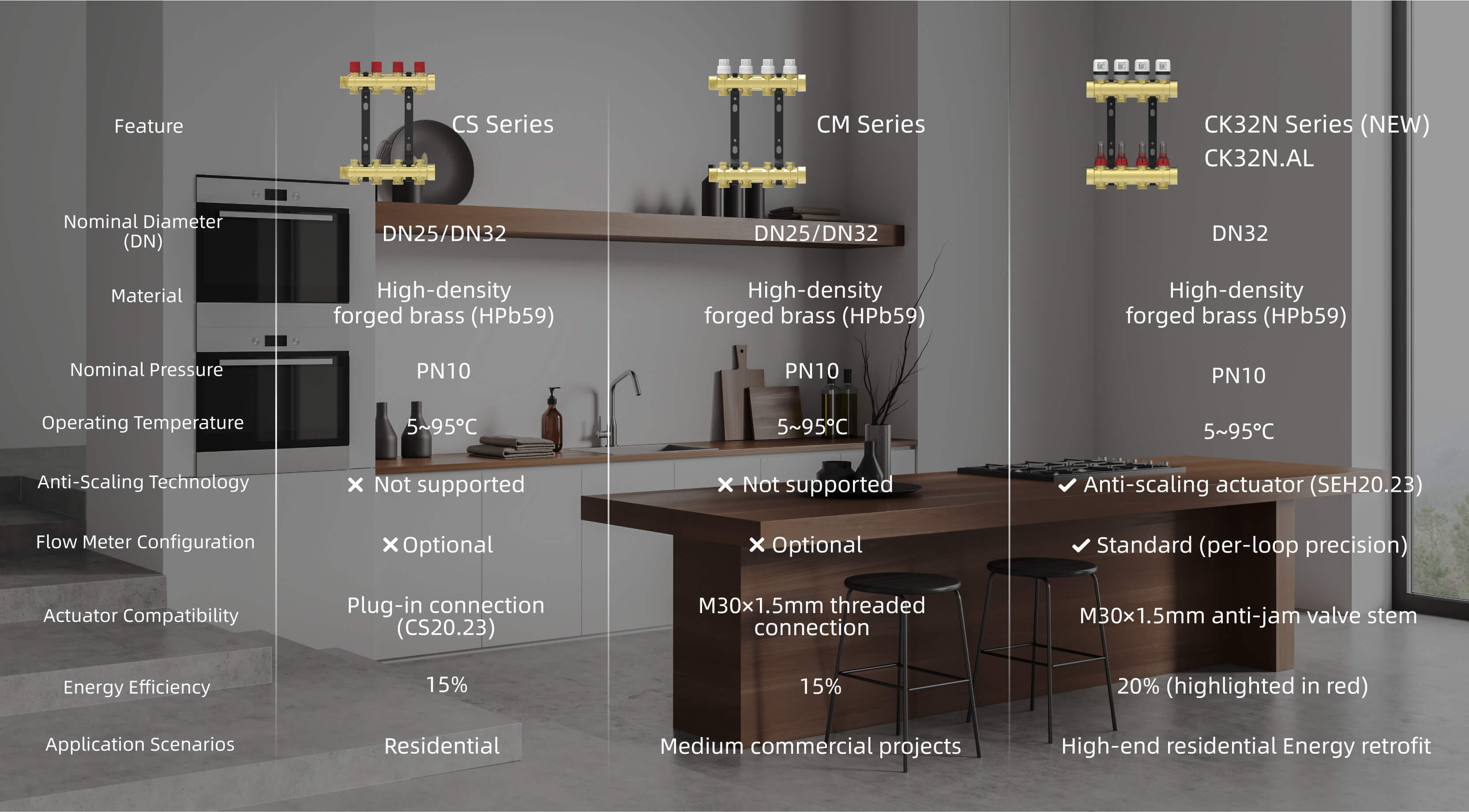Underfloor Heating Manifolds: Your Complete Guide to Efficiency, Installation, and Smart Control
views: 2284 time: 2025-05-18
views: 2284 time: 2025-05-18
Underfloor heating (UFH) systems have revolutionized home comfort, offering silent, even warmth without bulky radiators. At the heart of these systems lies the underfloor heating manifold—a critical component that ensures optimal performance. In this guide, we answer key questions about manifolds, debunk myths, and showcase why Menred’s solutions stand out.

1. Do I Need a Manifold for Underfloor Heating?
Absolutely. A manifold acts as the "control center" of a hydronic UFH system, distributing heated water from the boiler or heat pump to individual floor circuits. Without it, heat distribution becomes uneven, leading to cold spots and inefficiency.
Menred manifolds, feature high-density forged brass bodies and axial static seals to eliminate leaks. They balance water flow across multiple zones, allowing precise temperature control for each room. For larger homes, multiple manifolds may be needed, depending on pipe diameter and loop lengths.
2. Where Is the Best Place to Put the Underfloor Heating Manifold?
The ideal location balances accessibility and efficiency:
- Central Position: Reduces pipe runs and ensures even heat distribution.
- Utility Rooms or Cabinets: Conceals the manifold while allowing easy maintenance.
- Proximity to Heat Source: Minimizes heat loss and pump strain.
Menred’s CS and CM series manifolds are designed for flexible installation. Ensure at least 400mm clearance from the floor and proximity to a drain for maintenance.
3. Pros and Cons of Underfloor Heating
Pros:
- Even Heat Distribution: Eliminates cold zones and radiates warmth from the floor up.
- Energy Efficiency: Operates at lower temperatures (35–50°C) than radiators, reducing energy bills by up to 15%(The specific proportion may vary slightly due to system design, climate conditions, and building types).
- Aesthetic Freedom: No visible radiators, freeing up wall space.

Cons:
- Higher Initial Cost: Installation, especially retrofitting, can be expensive.
- Slower Response Time? Not Anymore.
While traditional radiant floor heating systems were known for slower response times due to thermal mass, this is no longer a major concern.
Thanks to advancements in construction methods and flooring materials—such as thin composite flooring and highly conductive ceramic tiles—modern underfloor heating systems now offer significantly faster heat-up times, making them much more responsive and efficient for daily comfort needs.
4 . What Temperature Should the Thermostat Be On?
For optimal efficiency, set the water temperature to 35–50°C and room thermostats to 20–22°C. Lowering the thermostat by 1°C can save 10% on energy costs. Menred’s smart thermostats with Wi-Fi control enable zone-based scheduling, reducing waste in unused rooms.
5. What Is the Best Underfloor Heating Manifold?

Menred’s manifold lead the market for three reasons:
1. Durability: High-density brass construction and anti-corrosion coatings ensure a 15+ year lifespan.
2. Precision Control: Flow meters and anti-scaling actuators (e.g., SEH20.23) prevent valve blockages.
3. Energy Savings: DN25/DN32 diameters optimize water flow, reducing pump workload.
The CK32N.AL, includes built-in flow meters for precise hydraulic balancing, cutting energy use by up to 20%.
6. What Flooring Is Not Suitable for Underfloor Heating?

Avoid:
- Thick Carpets (R-value >2.5): Insulate too effectively.
- Solid Wood: Prone to warping; opt for engineered wood or laminate.
- Vinyl with Poor Heat Resistance: May emit odors or deform.
Best choices include tile, stone, or low-resistance flooring.
7 . Is It Best to Run Underfloor Heating All the Time?
Yes—with moderation. UFH works best at a low, consistent temperature (18–20°C). Programmable thermostats can lower settings overnight or when rooms are unused, balancing comfort and cost.
Why Choose Menred?
Menred’s 30 years of expertise shine in innovations like:
- Axial Static Seal Technology: Zero-leak guarantees.
- Modular Designs: Expandable from 2 to 10 loops for custom layouts.
- Smart Integration: Compatible with Wi-Fi thermostats and home automation systems.
Installation Tip: Always use a leveling tool during setup and leave 100mm clearance above the manifold for actuator access.
Final Thoughts
Underfloor heating manifolds are indispensable for efficient, zoned comfort. By choosing Menred’s robust, energy-saving solutions and following best practices—like strategic placement and thermostat settings—you’ll enjoy warmth that’s as smart as it is sustainable.
Explore Menred’s full range of manifolds and unlock the future of home heating today.